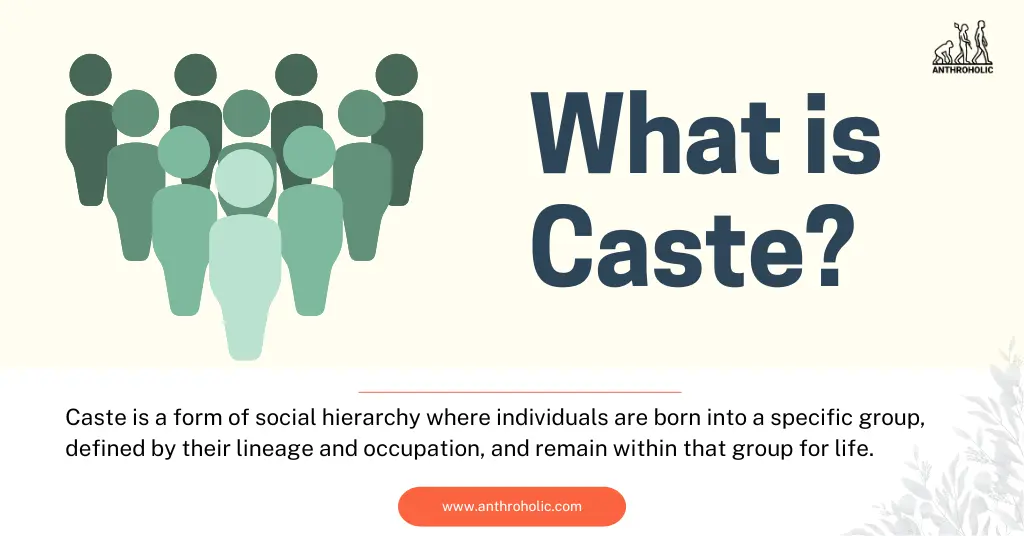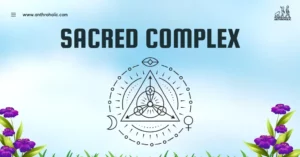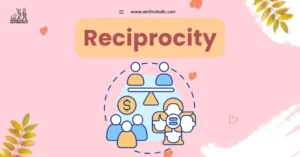AI Answer Evaluation Platform Live Now. Try Free Answer Evaluation Now
What is Caste
Caste, an entrenched social stratification system, is a profound aspect of many cultures but is particularly notable within the Indian subcontinent. This article explores the concept of caste from an anthropological perspective, delving into its origins, structure, effects, and contemporary dynamics in India.

Definition and Origins
Caste is a form of social hierarchy where individuals are born into a specific group, defined by their lineage and occupation, and remain within that group for life [1].
Historical Overview
The roots of the caste system can be traced back to ancient Indian scriptures, such as the Rigveda, where it was initially linked to occupational divisions [2]. It later became rigid and hereditary, heavily influenced by religious and philosophical doctrines.
Historical Background
Origins
The caste system in India can be traced back to more than 2000 years ago, evolving from the Varna system mentioned in ancient Hindu scriptures. Four main categories were initially established:
- Brahmins: Priests and scholars
- Kshatriyas: Warriors and rulers
- Vaishyas: Traders and agriculturists
- Shudras: Laborers and service providers
Evolution
Over time, the caste system became more complex, branching into thousands of sub-castes, or jatis [3]. It evolved into a rigid social hierarchy that determined everything from occupation to marriage.
Structure and Hierarchy
The Varna System
The following table represents the primary structure of the Varna system:
| Varna | Occupation | Status |
|---|---|---|
| Brahmins | Priests/Scholars | Highest |
| Kshatriyas | Warriors/Rulers | High |
| Vaishyas | Traders/Farmers | Middle |
| Shudras | Laborers | Low |
The Jati System
The jatis are numerous sub-castes within the four primary Varnas, often linked to specific professions and governed by local customs [2].
Social Implications
Discrimination and Inequality
The caste system has led to significant social inequalities and discrimination, especially towards the lower castes, sometimes referred to as “Untouchables” or Dalits [4].
Marriage and Social Interaction
Marriage within the caste was strictly enforced, contributing to social cohesion but also promoting segregation.
Caste in Modern India: Challenges and Transformations
Economic Impact
Occupational Boundaries
Traditionally, caste dictated the type of occupations individuals could pursue. While this has been challenged by modern economic dynamics, traces of these occupational boundaries persist in certain regions.
Affirmative Action
Reservation policies provide quotas for lower castes in education and government jobs, aiming to mitigate historical disadvantages. These policies have had mixed success, with ongoing debates regarding their impact and relevance.
Education
Education plays a vital role in challenging caste-based inequalities. However, disparities in access to quality education across different castes continue to persist.
Political Landscape
Caste-based politics has been both a means of empowerment for marginalized communities and a source of division. Political parties often align with caste groups to garner support, reflecting the lingering importance of caste in Indian democracy.
Gender and Caste
The intersection of caste and gender adds another layer of complexity. Women from lower castes often face multiple forms of discrimination due to their caste and gender.
Social Movements
The anti-caste movement, spearheaded by figures like B.R. Ambedkar, has been instrumental in challenging caste hierarchies. Contemporary social movements continue to fight against caste-based discrimination and seek social justice.
Global Perspective and Comparisons
Though most prominently observed in India, the concept of caste is not unique. Similar systems of social stratification exist in other cultures, such as the feudal system in medieval Europe. A comparative analysis helps to understand the universal nature of social hierarchies.
Challenges in Understanding Caste
Complexity of Caste Dynamics
Understanding caste requires navigating the intricate web of regional variations, religious interpretations, economic factors, and political dynamics.
Methodological Issues
Anthropological studies on caste require careful consideration of historical context, subjective experiences, and the biases and perspectives of both the researcher and subjects.
Future Directions and Considerations
Caste continues to evolve, reflecting broader social, economic, and political changes. Future studies must consider the shifting dynamics of caste, its interaction with global influences, and the ongoing struggle for social justice and equality.
Conclusion
Caste is a multifaceted and deeply entrenched aspect of Indian society, impacting virtually every facet of life. The ongoing transformation of caste dynamics reflects the broader evolution of Indian society. The study of caste is not only vital for understanding India but also provides insights into universal themes of social hierarchy, inequality, identity, and human rights.
References
[1] Dumont, L. (1980). Homo Hierarchicus: The Caste System and Its Implications. Chicago: University of Chicago Press. https://press.uchicago.edu/ucp/books/book/chicago/H/bo25135790.html
[2] Béteille, A. (1996). Caste, Class and Power. New Delhi: Oxford University Press.
[3] Ghurye, G. S. (1969). Caste and Race in India. Mumbai: Popular Prakashan.
[4] Srinivas, M. N. (1962). Caste in Modern India. Bombay: Asia Publishing House.




